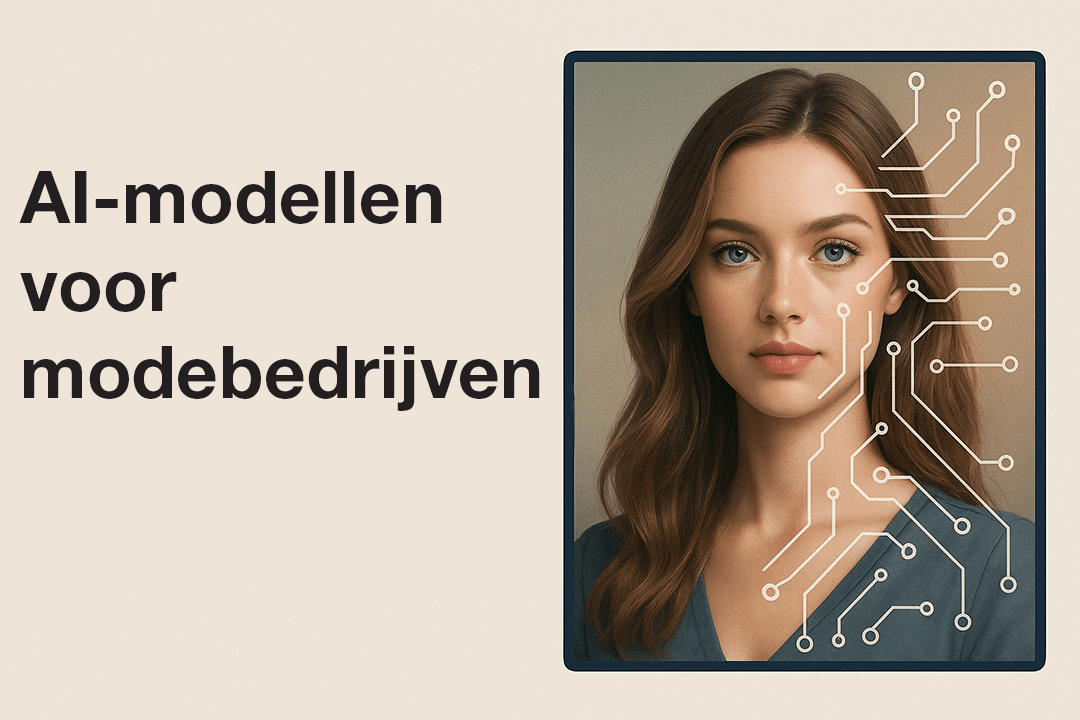1. Strategic drivers
The recent uproar surrounding the fully AI-generated Guess ad in American Vogue illustrates how quickly AI is evolving in the fashion world. Where AI was first mainly seen as creative experiments, it is now used at the top level in international campaigns. This underlines the strategic drive of brands to operate not only faster, but also more relevant in an increasingly digital media landscape. The speed with which a trend from TikTok can be translated into an AI-generated campaign – often within 24 hours – makes it clear how important ‘real-time marketing’ has become.
Fashion companies are exploring the application of AI model images mainly because they offer speed, cost savings, and scalability. With AI, brands can create new campaigns, adjust images, or generate product visuals at lightning speed without physical shoots. This offers great advantages in the fast-paced, trend-driven fashion world, where topicality and flexibility are crucial.
According to AI expert Hannes Cools, the economic benefits are obvious: campaigns are ready in days instead of weeks and save up to 90% on production costs. Companies such as Zalando also confirm that 70% of their footage is now ‘AI-enhanced’, with a direct impact on both speed and budget. This efficiency makes AI attractive not only for fashion brands, but also for retailers who constantly need new content.
In addition, AI offers creative freedom. Companies like Seraphinne Vallora are developing ‘AI model cloning’ – digital doppelgangers of real people – allowing brands to deploy their models globally without logistical constraints.
2. Creative and commercial benefits
- Cost savings: No models, locations or crew required.
- Speed and flexibility: From idea to campaign in hours instead of days.
- Consistency: One uniform picture style across all channels.
- Personalization: AI images can be tailored to customer profiles or even individual users (think virtual pass options).
- Sustainability: Less transport, material and waste.
- Innovation and creative freedom: New styles, virtual settings and dynamic visuals without physical limitations.
3. Internal impact and opportunities
The public reaction to the Vogue example shows that consumers are not indifferent to AI models. There was criticism on social media that women are now not only confronted with edited, but also non-existent beauty images. Psychologist Patrick Wessels warns that this can further undermine self-image: people compare themselves to something that is completely synthetic.
Although AI carries the promise of diversity and inclusion, in practice it appears that many generated faces still follow Western beauty ideals. In doing so, AI reinforces existing prejudices instead of breaking them.
In addition, transparency plays a growing role. Campaigns such as the one at Westfield Mall, where it is explicitly stated that the images were made with the help of AI, show a first step towards fairness. Brands that are not transparent run the risk of reputational damage.
Finally, the ecological footprint of AI also remains relevant. Training generative models requires considerable energy, so the durability of AI images is not self-evident.
AI is also changing the division of roles within creative teams. The photographer or art director is more likely to become an AI director, translating creativity into prompts and giving direction to algorithms. This requires new skills, but at the same time creates opportunities for specialists who excel in AI creation.
4. Risks and considerations
These benefits are offset by real challenges:
- Authenticity: Customers notice the difference between real and synthetic.
- Ethical issues: Copyright, bias and transparency remain sensitive.
- Creative direction: The maker must be careful that technology does not take over the artistic vision.
- Uniformity: Without a clear brand style, visual uniformity threatens.
The reactions to Vogue and other brands show that the balance between innovation and credibility remains delicate. AI is undeniably a catalyst for speed, flexibility and creative innovation, but at the same time requires human direction, ethical consideration and transparency.
As Cools emphasizes: “AI is a tool, not a replacement for human insight or creativity.” The future of fashion therefore lies not only in digital perfection, but in the collaboration between technology and human authenticity – exactly where brands can distinguish themselves.
- Technical dependencies: Results depend on model quality and AI knowledge.
- Energy consumption: The sustainability gain is relative; AI requires computing power.
5. Conclusion
AI models do not replace human creativity, but can enhance it if carefully integrated. For fashion companies, the value lies not in phasing out real photography, but in strategically combining man and machine:
- Human direction creates authenticity and emotion.
- AI delivers speed, scale, and innovation.
The future of fashion therefore lies not in humans or AI, but in humans with AI, with brand story, style and vision as a distinctive compass.
With the development of its AI toolkit, Linx IT Solutions is responding to the need of brands to be able to set up their processes differently with the help of AI-driven tools and to be able to respond to current events. The AI toolkit offers a range of AI tools, specifically aimed at generating eCommerce content, from a single cloud application.
Do you also want to discover how AI toolkit can support your employees? Please contact Amber via a.kok@linx-it.com
